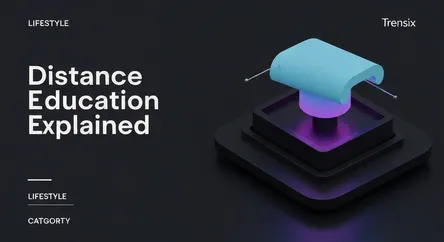Lifestyle
Distance Education Explained

Discover distance education, the flexible learning model allowing students to study remotely. Learn why online courses are becoming the new norm.
What is it?
Distance education, also known as online or remote learning, is a mode of education where students are not physically present in a traditional classroom. Instead, instruction is delivered through various technologies, primarily the internet. This model utilizes tools like virtual classrooms, video conferencing, digital course materials, and online forums to facilitate communication and learning between instructors and students, breaking down geographical barriers to education.
Why is it trending?
The surge in distance education's popularity is driven by its unparalleled flexibility and accessibility. Advances in technology have made online platforms more interactive and robust than ever. The global pandemic significantly accelerated this trend, forcing institutions worldwide to adopt remote models. Learners are increasingly drawn to the ability to balance studies with work, family, and other commitments, while institutions see it as a way to reach a broader, more diverse student base.
How does it affect people?
Distance education democratizes access to learning, offering opportunities to individuals who are geographically isolated, have physical disabilities, or require a non-traditional schedule. It fosters crucial skills like self-discipline, time management, and digital literacy. However, it also presents challenges, such as potential feelings of isolation for students and the necessity of reliable internet access, which can highlight a significant digital divide among different socioeconomic groups.